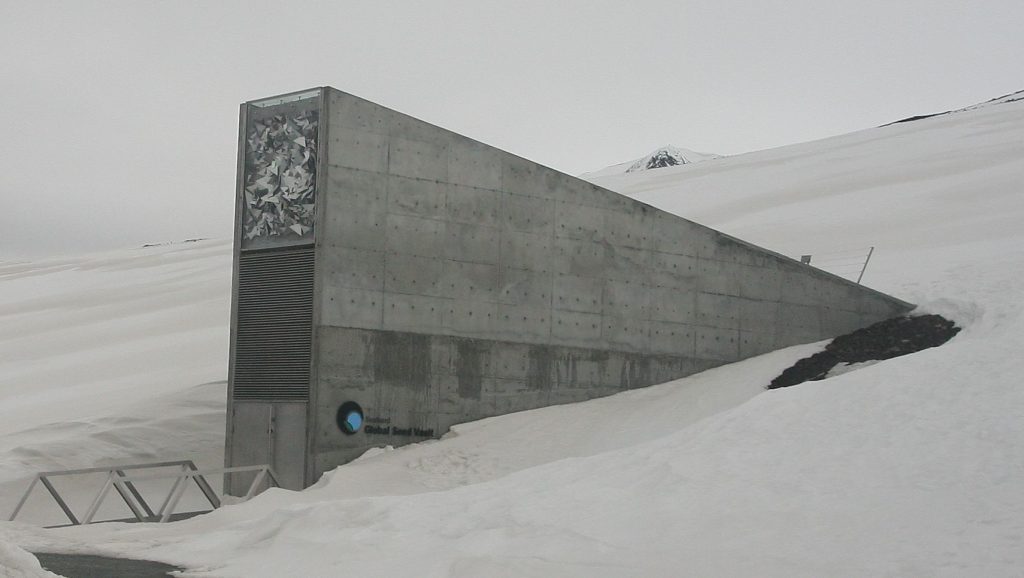

So in a sense, we've - it's a bit of a proof of concept. So in February this year, we got our first shipment of seeds back from this institution of seeds that we had shipped them. And we'd been sending sort of installments of their seeds back.Īnd earlier this year - well, let me back up and say that when they receive those seeds, what they do is plant them and get even more seeds, fresh new seeds, for their breeding programs - but also enough seeds to replenish the supplies that they had retrieved from the seed vault. So in September of 2015, they asked us to send their seeds back. And so they had to re-establish their gene bank, which is the raw material for their research and plant breeding. And it became clear that they weren't going to be able to return to Aleppo. And they eventually re-established their research and breeding facilities in Morocco and Lebanon. GROSS: So what happened to the seed vault in Syria?įOWLER: Because of the war in Syria, the scientists had to flee. And we got the last ones out just a couple of weeks before, really, all hell broke loose in Aleppo. They sent samples of almost 100,000 different crop varieties up to the seed vault. So we worked pretty hard with their staff to get a copy of their materials out. And I think we ought to get a safety duplicate copy of your collection up to the Global Seed Vault near the North Pole. So I got on the phone with this fellow that was a friend of mine and said, look, there seems to be some trouble starting in your region. It was actually an international organization that happened to be based in Syria. It was not, I would stress, a Syrian national facility. And that institute, uniquely, had one of the largest collections of wheat diversity and also barley, lentils, chickpeas diversity in the world - a really, really important agricultural facility. In fact, when Arab Spring started, I got on the phone with the director general of the International Center for Agricultural Research and Dry Areas, which was located just outside of Aleppo, Syria. We did certainly get pretty active in the run-up to that. GROSS: So when there's a war, an impending disaster, do you try rescue seeds from there? Like the war in Syria which has decimated so much of Syria.įOWLER: Well, we - yes. But mostly, countries and institutions around the world that are involved in this have been saving seeds, freezing them for the long term and for short-term use, and plant breeding programs and other kinds of biological research. Some crops can't be conserved that way, and there are other means for doing that. And typically, over the years, most of that conservation of crop diversity has been done by conserving seeds. We want to save all the traits that plant diversity has. We don't want to eliminate or reduce those colors. And those are the options that we have for the future, just like an artist would have a lot of different colors on his or her palette. So if we want our crops to be productive in the future, if we want them adapted to new climates or to whatever pest or disease is out there, then we need to conserve that diversity because the diversity is really a diversity of traits. But it's the biological foundation of agriculture, and it's the raw material for plant evolution, for plant breeding for the future. And most people don't really stop to think of why crop diversity is important enough to be conserving.

So tell us what the point of the seed vault is.ĬARY FOWLER: The point is to conserve crop diversity. He's also the author of a book about the Global Seed Vault called, "Seeds On Ice".Ĭary Fowler, welcome to FRESH AIR. In the '90s, he led the team that conducted the U.N.'s first global assessment of the state of the world's crop diversity. Part of what makes the vault safe is its location, just 700 miles from the North Pole.įowler conceptualized the vault, headed the committee that developed the plan for the facility and is the founding chair of the international council that has overseen the vault since its inception. It stores and protects nearly a million samples of crop varieties from about 5,000 different species with the mission of safeguarding the diversity of our agricultural crops in perpetuity, in spite of war, pestilence and climate change. He prefers the official name, the Global Seed Vault.

My guest Cary Fowler is the creator of the vault, but he doesn't much like the doomsday title. It's been called the doomsday vault, the vault that will preserve the seeds of life after a catastrophic event.


 0 kommentar(er)
0 kommentar(er)
